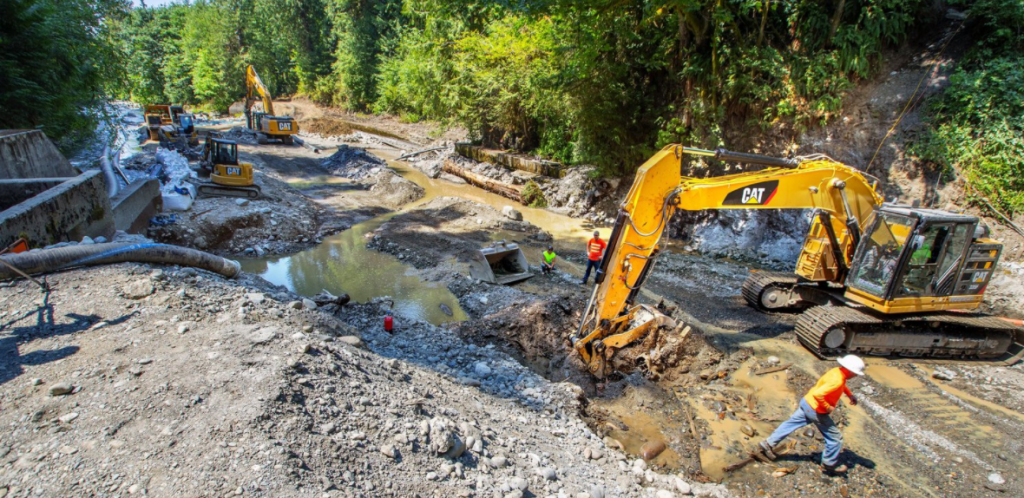Anchor QEA’s Dam Removal and Habitat Restoration Featured in The Seattle Times
Washington’s dam-busting summer continues with another dam removal project on the Pilchuck River. This $2 million effort will restore 37 miles of salmon habitat and benefit multiple species—including the threatened chinook salmon, a crucial food for endangered southern resident Orcas.
In support of the partnership between the Tulalip Tribes and the City of Snohomish, Anchor QEA provided infrastructure removal planning and design, water quality management, Endangered Species Act compliance, and is providing construction support and water quality monitoring, which will help open this stretch of habitat for the first time in more than a century.
Another Washington dam removal — and 37 more miles of salmon habitat restored
PILCHUCK RIVER, near Granite Falls, Snohomish County — Washington’s dam-busting summer is still rolling, with two more dams coming down on the Pilchuck River, opening 37 miles of habitat to salmon for the first time in more than a century.
The $2 million dam removal project is a collaboration between the City of Snohomish and Tulalip Tribes, and will benefit multiple species of salmon, including threatened chinook salmon, crucial food for endangered southern resident killer whales.
It’s the state’s second dam teardown project in two months. In July, the city of Bellingham blew up its Nooksack Diversion Dam on the Middle Fork of the Nooksack River, opening 16 miles of habitat for salmon, including chinook.
In each case, dam removal was the practical solution to the problem of old infrastructure that no longer served its purpose and was too costly to either maintain or bring up to modern standards, either for fish, or water supply. Both the Pilchuck and Nooksack dams were for water diversion.
Steve Schuller, city administrator and utility general manager for the city of Snohomish, received direction from the City Council in 2014 to get the city out of the water-supply business for the first time in more than 100 years.
The reason was simple: Paying for legally required upgrades to the city’s water supply infrastructure was going to be more expensive for city residents than buying water from Everett, which was already supplying water for the north half of town.

While water from the Pilchuck River is diverted through the old fish ladder at left, crews from The Tulalip Tribes work to remove the Pilchuck Dam, built in 1912, that once supplied water to the town of Snohomish. Removing the dam near Granite Falls will open 37 miles of spawning habitat for many species of fish.
The Pilchuck, a tributary of the Snohomish, is in a culturally and environmentally important watershed for the tribes. While the Pilchuck is significantly altered by development in its lower reaches, its headwaters are largely intact, mostly in publicly owned timberland, and ideal for salmon, Shattuck said.
Caught between the pressures of climate change and population growth in Snohomish County, the tribes are working urgently to repair habitat to give salmon a chance at survival into the future.
Historically, about 12,000 chinook came back to the Pilchuck. Today, on average, just 100 come back. Last year, the worst on record, only 50 did. How many more will eventually come home is hard to say, but with a third more habitat to use with the dams out, the tribes are hoping for a big boost, Shattuck said.


